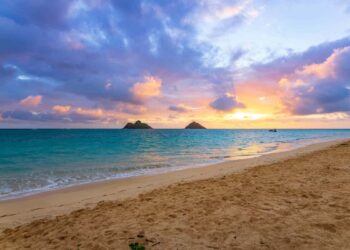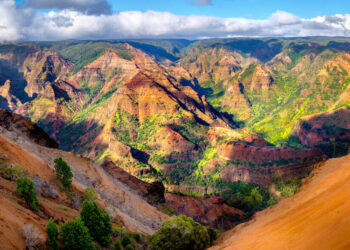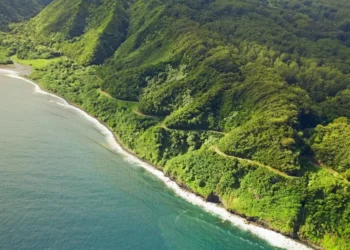Yellowstone National Park—what can I say? It’s one of those places that, once you step foot inside, feels like stepping into another world. Established in 1872, it’s the first national park in the world, and it holds onto that title like it’s holding a treasure chest. With 2.2 million acres of wild beauty, from bubbling hot springs to vast forests, there’s something in Yellowstone for every kind of traveler. Whether you’re into geology, wildlife, or just getting lost in nature, this park never fails to leave an impression.
Here’s a look at some of the park’s highlights and a few things you might not expect—but will definitely appreciate—on your adventure.
Geysers and Hot Springs: Nature’s Show-Offs
If you’ve heard of Yellowstone, chances are, you’ve heard about its geothermal wonders. And why wouldn’t you? The park sits atop a supervolcano, which means it has more geothermal features than any place on Earth. Let’s talk about Old Faithful—yes, it’s the famous one. It erupts with surprising regularity, about every 90 minutes. It’s definitely a sight to behold, and there’s something about seeing that powerful plume of steam and water that makes you feel like you’ve witnessed a piece of raw nature.
But here’s a little secret—there’s more to discover. Grand Prismatic Spring is the next showstopper you shouldn’t miss. Picture this: a gigantic pool of blue water surrounded by rings of bright orange, yellow, and green. It’s like someone’s painted a canvas with the brightest colors in the palette. And it’s not just the colors—it’s the science behind them. The vibrant hues come from bacteria that live in the warm waters, creating a living, breathing work of art.
And while you’re at it, check out Norris Geyser Basin, the hottest and most active part of the park. You’ll see geysers shooting up unexpectedly, hot springs bubbling away, and fumaroles—steam vents—sizzling like something out of a sci-fi movie.
Wildlife: The Real Stars of the Show
If you’re a wildlife enthusiast, Yellowstone is like a nature documentary come to life. You’ll see bison, elk, wolves, and grizzly bears in their natural habitat. It’s an experience like no other.
Start your wildlife journey in Lamar Valley—they call it the “Serengeti of North America” for a reason. Bison are everywhere, grazing lazily by the river, and if you’re lucky, you might catch sight of a pack of wolves or a grizzly bear. It’s the best place to spot wildlife, especially in the early morning or late afternoon when the animals are most active.
Another wildlife hotspot is Hayden Valley, which is another prime spot for bison, along with moose and the occasional black bear. The valley is less crowded than Lamar, but no less stunning. The combination of open meadows and the Yellowstone River is perfect for animal sightings.
Pro Tip: Pack binoculars and a zoom lens for your camera. Trust me, you’ll want to snap some shots from a safe distance. And remember, the rule of thumb is to stay at least 100 yards away from bears and wolves and 25 yards from other animals.
Hiking: Take a Hike (Or Several)
Yellowstone is a hiker’s dream. With hundreds of miles of trails ranging from easy strolls to more challenging hikes, there’s a path for everyone.
One of the most popular hikes is Uncle Tom’s Trail, which takes you down to the base of the Lower Falls in the Grand Canyon of the Yellowstone. The trail is steep but short, and the view at the bottom is worth the sweat.
For a longer, more strenuous option, try the Mount Washburn Trail. It’s a 6.2-mile round-trip trek that takes you to one of the highest points in the park. From the summit, you get panoramic views of the entire park. On clear days, you can even spot the Grand Tetons to the south.
But if you’re looking for something a little less crowded and more peaceful, the Lone Star Geyser Trail is a perfect choice. The 5-mile round-trip hike leads you to the Lone Star Geyser, which erupts every three hours. It’s a quiet, beautiful spot to enjoy the solitude of the park.
Pro Tip: Yellowstone’s altitude can make hiking a bit more challenging than you might expect, so stay hydrated, take your time, and listen to your body. Altitude sickness can sneak up on you if you’re not careful.
The Grand Canyon of the Yellowstone: Nature’s Masterpiece
If you’re in Yellowstone, you can’t miss the Grand Canyon of the Yellowstone. It’s a dramatic canyon carved by the Yellowstone River, and it’s simply breathtaking. The rock walls are painted in shades of yellow, orange, and red, and the Lower Falls, dropping 308 feet into the canyon, is one of the most iconic sights in the park.
One of the best viewpoints is Artist Point, where you get the classic, postcard-perfect shot of the falls. But if you’re up for a little adventure, hike down Uncle Tom’s Trail, which takes you right to the base of the falls. The view from the bottom is awe-inspiring.
Pro Tip: Sunrise or sunset are the best times to visit the canyon. The light at those times is soft and golden, casting a warm glow on the canyon walls and making for some amazing photos.
Practical Tips for Visiting Yellowstone
- Weather: Yellowstone weather can be unpredictable, even in summer. You can experience four seasons in a single day, so pack layers. Bring a waterproof jacket, even if it’s sunny when you leave your hotel.
- Wildlife Safety: While it’s incredible to see bison, bears, and wolves up close, always remember they are wild animals. Keep a safe distance—at least 100 yards from bears and wolves, and 25 yards from other wildlife. Never approach animals, and definitely don’t feed them.
- Stay on Trails: It might be tempting to venture off the path, but stay on marked trails and boardwalks. Yellowstone’s geothermal features are fragile and dangerous, and it’s easy to get hurt if you stray off the designated areas.
- Food and Accommodations: Yellowstone has several lodges, including Old Faithful Inn, which is an iconic place to stay. The park also has a variety of campgrounds, but these can fill up quickly in the summer, so it’s a good idea to book ahead. If you’re staying in the park, be aware that dining options can be limited, so plan accordingly.
- Hydration and Snacks: The park’s high altitude can dehydrate you faster than you realize, especially when you’re hiking or exploring. Carry a water bottle and some snacks to keep your energy levels up.
Wrapping Up: Yellowstone’s Magic
Yellowstone is a place that stays with you long after you’ve left. Whether it’s the sight of a steaming geyser, the thrill of spotting wildlife in the wild, or the sheer awe of the park’s natural beauty, Yellowstone offers experiences that are both unforgettable and humbling. There’s something here for everyone, and no matter how long you stay, you’ll always leave wanting more.











